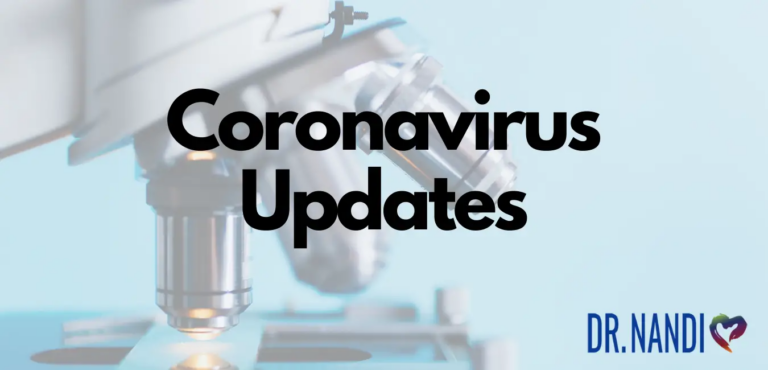Despite its endearing name, the “kissing bug” is far from a creature you’d want to encounter. Contrary to what the name might suggest, this bug isn’t as innocuous as a ladybug or as gentle as a butterfly. In reality, the kissing bug is a serious threat to public health, known for spreading Chagas disease — a potentially life-threatening illness.
As this insect continues to migrate further into areas including New Jersey, understanding the risks and recognizing the dangers becomes crucial.
The Kissing Bug: What You Need to Know
The kissing bug, scientifically known as the Triatomine bug, is a type of blood-sucking insect that can carry the dangerous Trypanosoma cruzi parasite, responsible for causing Chagas disease.
These bugs are about an inch in length and are recognizable by their distinctive body shape and markings. They sport a large, almost diamond-like body with a small, cone-shaped head. A notable feature is the band around their body’s outer edge, marked with small orange or red stripes, making them quite distinctive among nocturnal insects. [1]
Feeding Habits and Nocturnal Nature
Kissing bugs are primarily nocturnal, emerging in the darkness to feed on the blood of mammals, including humans. Their feeding habits are particularly sneaky — they often bite sleeping individuals around the eyes and mouth, areas where the skin is thinner and more accessible. The choice of such vulnerable areas for feeding increases the risk of transmitting the Trypanosoma cruzi parasite to their hosts. [1, 2]
Why Are They Called ‘Kissing Bugs’?
The term “kissing bug” may sound pleasant, but the truth is quite the opposite. These bugs are given this name because of their tendency to bite near the face, particularly around the lips and eyes.
This method of feeding not only makes it easier for them to access blood but also increases the likelihood of the host inadvertently rubbing the bug’s feces into the bite wound or mucous membranes, which is the primary route through which the Chagas disease parasite is transmitted.
Geographical Spread and Habitats
Historically, the kissing bug has been predominantly found in the warmer climates of South America, Central America, and Mexico. However, it has not confined itself to these regions. In the United States, the kissing bug has been reported in 28 states, with significant populations initially noted in southern states like Texas and California. [3]
Recent observations, however, indicate a concerning shift, as these insects have begun appearing as far north as New Jersey. This migration northwards is not an isolated trend but part of a broader movement influenced by various environmental and climatic factors.[4]
Environmental Factors Driving Migration
The expansion of the kissing bug’s habitat into northern states such as New Jersey can be attributed to several key environmental changes. Rising temperatures across the globe play a significant role, as warmer climates facilitate the survival and proliferation of these typically tropical insects in more temperate zones.
Additionally, changes in land use, such as deforestation and urbanization, disrupt the natural habitats of wildlife, including the predators of the kissing bug. This lack of natural predators in new areas allows the kissing bug populations to grow unchecked. [3]
The migration of the kissing bug into new areas poses increased risks of Chagas disease transmission to human populations previously unexposed to this threat. Understanding these environmental factors is crucial in predicting future spread and implementing strategies to mitigate the kissing bug’s impact on public health.

Health Risks and Symptoms of Chagas Disease
Chagas disease, a significant health concern attributed to the kissing bug, is caused by the parasite Trypanosoma cruzi. The transmission occurs in a uniquely disturbing manner. While the kissing bug feeds on human blood, typically around the face, it simultaneously defecates.
The feces contain the parasite, and if this feces is inadvertently rubbed into the bite wound or into mucous membranes, such as the eyes or mouth, the parasite enters the bloodstream. This mode of transmission underscores the importance of understanding and recognizing kissing bug behavior to prevent infection.
Phases and Symptoms of Chagas Disease
Chagas disease progresses in two distinct phases: the acute phase and the chronic phase, each with different symptoms and health implications.
Acute Phase:
The acute phase occurs immediately after infection, lasting for a few weeks to a few months. Symptoms during this phase are often mild and nonspecific, making it difficult to diagnose. They can include:
- Swelling at the infection site, particularly where the bite occurred
- Fever
- Fatigue
- Body aches
- Headache
- Rash
- Loss of appetite
- Diarrhea or vomiting
Because these symptoms mirror those of many other common illnesses, they may not immediately suggest Chagas disease, often leading to underdiagnosis.
Chronic Phase:
If left untreated, Chagas disease can enter the chronic phase, which might remain silent for years or even decades. During this phase, the parasite can cause severe cardiac and digestive problems, including:
- Enlarged heart (cardiomyopathy), leading to ineffective heart function and increased risk of heart failure
- Altered heart rate or rhythm, potentially resulting in sudden death
- Enlargement of the esophagus or colon, complicating eating and digestion
The chronic phase poses severe health risks and significantly affects quality of life, emphasizing the need for early detection and treatment of the infection. [5]

Prevention and What to Do If Bitten
Preventing encounters with kissing bugs is crucial, particularly in areas known for their presence. Here are some practical tips to reduce the risk of coming into contact with these dangerous insects:
- Seal Entry Points: Ensure that windows, doors, and walls are well-sealed. Use fine mesh screens on windows and vents to prevent bugs from entering.
- Maintain Clean Surroundings: Reduce outdoor clutter near your home, such as piles of wood, rocks, and leaves, which can serve as ideal hiding spots for kissing bugs.
- Use Proper Lighting: Minimize outdoor lighting at night, which can attract kissing bugs. Opt for yellow bulbs or sodium vapor lights, which are less attractive to insects.
- Pet Safety: Keep pet sleeping areas clean and indoors if possible, as pets can also be bitten and infected by kissing bugs.
- Regular Inspections: Check your home and any outdoor buildings regularly for signs of infestation.
Steps to Take If You Suspect a Bite
If you suspect that you or someone else has been bitten by a kissing bug, taking immediate and correct action is vital for health and accurate diagnosis:
- Do Not Crush the Bug: If the bug is still present, do not crush it. Crushing may spread the parasite more widely through its feces.
- Capture the Bug Safely: Carefully place a jar or container over the bug, slide a piece of paper underneath to trap it, and secure it with a lid. This method avoids direct contact and preserves the bug for identification.
- Seek Medical Attention: Consult a healthcare provider as soon as possible. Explain the situation and the potential for Chagas disease. Early testing and treatment can be crucial.
- Submit the Bug for Identification: Take the captured bug to your local health department, a university laboratory, or a professional entomologist for identification. Confirming whether it is indeed a kissing bug and if it carries the Chagas disease parasite is essential for appropriate medical response.
Implementing these preventative measures and knowing what to do if bitten can significantly reduce the risk of contracting Chagas disease and ensure prompt treatment. This proactive approach is essential for those living in or visiting high-risk areas.
Public Health Implications of the Spread of Kissing Bugs
The spread of kissing bugs and the transmission of Chagas disease pose significant public health challenges. As these insects extend their range into new areas, including more temperate regions, the potential for Chagas disease outbreaks increases.
This scenario is particularly concerning because Chagas disease can be silent for many years, complicating efforts to control its spread and impact. The long-term health consequences, such as heart disease and gastrointestinal complications, can lead to severe outcomes, including death, if not treated early.
In countries where kissing bugs are more common, and medical resources may be limited, the spread of Chagas disease can strain public health systems. Increased incidence of the disease can lead to higher healthcare costs, a need for more medical facilities specializing in cardiac and gastrointestinal treatment, and a greater burden on healthcare providers.
My Personal RX on Preventing Infections from Insect Bites
Protecting your household from kissing bugs and other infective insects is crucial to prevent the spread of parasitic infections. A proactive approach to managing your environment and strengthening your body’s natural defenses can make a substantial difference in your overall health safety.
- Secure Your Home: Ensure that screens on windows and doors are intact and seal any cracks or gaps where insects might enter. Keeping your living environment tightly secured reduces the risk of insect intrusion.
- Use Natural Repellents: Opt for natural insect repellents such as citronella, eucalyptus, or lavender oil. These can be effective in deterring insects without the use of harsh chemicals.
- Maintain Clean Outdoor Spaces: Regularly clear your yard of debris, stagnant water, and any rubbish that can serve as breeding grounds for insects. Proper yard maintenance is crucial in preventing insect habitats close to your home.
- Enhance Your Diet with Omega-3 Fish Oil: Incorporating Omega-3 Fish Oil supplements can support your overall health, strengthening your immune system. A robust immune system can be more efficient in fighting off infections, including those that might be transmitted by insects.
- Follow my Protocol: Utilize the Protocol guide for comprehensive strategies for maintaining a healthy, safe environment. This guide can provide you with more in-depth information on preventive health measures, including protection against parasitic infections.
- Educate Your Household: Ensure that everyone in your home understands the risks associated with infective insects and the importance of preventative measures. Education is key to ensuring that all members of the household adhere to safety practices.
Sources:
- Reisenman, C. E., Lawrence, G., Guerenstein, P. G., Gregory, T., Dotson, E., & Hildebrand, J. G. (2010). Infection of kissing bugs with Trypanosoma cruzi, Tucson, Arizona, USA. Emerging infectious diseases, 16(3), 400–405. https://doi.org/10.3201/eid1603.090648
- What you should know about kissing bugs. (2022, April 13). Cooperative Extension | the University of Arizona. https://extension.arizona.edu/what-you-should-know-about-kissing-bugs
- Klotz, S. A., Dorn, P. L., Mosbacher, M., & Schmidt, J. O. (2014). Kissing bugs in the United States: risk for vector-borne disease in humans. Environmental health insights, 8(Suppl 2), 49–59. https://doi.org/10.4137/EHI.S16003
- Medone, P., Ceccarelli, S., Parham, P. E., Figuera, A., & Rabinovich, J. E. (2015). The impact of climate change on the geographical distribution of two vectors of Chagas disease: implications for the force of infection. Philosophical transactions of the Royal Society of London. Series B, Biological sciences, 370(1665), 20130560. https://doi.org/10.1098/rstb.2013.0560
- World Health Organization: WHO. (2024, April 4). Chagas disease (also known as American trypanosomiasis). https://www.who.int/news-room/fact-sheets/detail/chagas-disease-(american-trypanosomiasis)



















